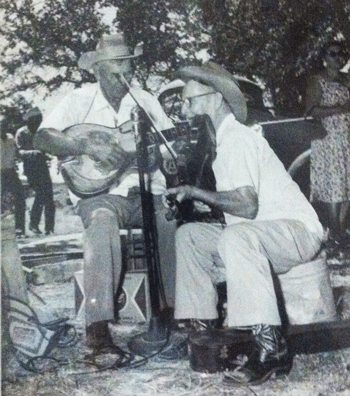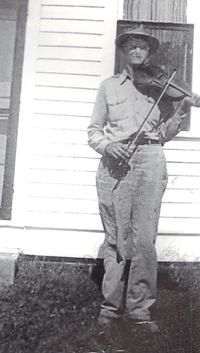Annotation:Black Eyed Susie (1): Difference between revisions
m (Text replacement - "Century Gothic" to "sans-serif") |
m (Text replacement - "<p><font face="sans-serif" size="2">" to "<p><font face="sans-serif" size="3">") |
||
| Line 7: | Line 7: | ||
---- | ---- | ||
<div style="page-break-before:always"></div> | <div style="page-break-before:always"></div> | ||
<p><font face="sans-serif" size=" | <p><font face="sans-serif" size="3"> | ||
<div style="text-align: justify; direction: ltr; margin-bottom: 90px; margin-left: 70px; margin-right: 120px;"> | <div style="text-align: justify; direction: ltr; margin-bottom: 90px; margin-left: 70px; margin-right: 120px;"> | ||
<br> | <br> | ||
| Line 32: | Line 32: | ||
</font></p> | </font></p> | ||
<div class="noprint"> | <div class="noprint"> | ||
<p><font face="sans-serif" size=" | <p><font face="sans-serif" size="3"> '''Additional notes''' </font></p> | ||
<p><font face="sans-serif" size=" | <p><font face="sans-serif" size="3"> | ||
<font color=red>''Sources for notated versions''</font>: - John Hilt (Tazewell County, Virginia) [Krassen, 1983]; Bob Walters (Lincoln, Nebraska) [Christeson]; New Lost City Ramblers [Brody, Kuntz]; John Tustin & S. Clark (southwestern Pa., mid-1900's) [Bayard]; Uncle Tom West (Boyd County, Ky., 1911) [Thomas & Leeder]; Doc Roberts, 1927 (Ky.) [Phillips, Titon]; Luther Strong (Hazard, Perry County, Ky.), 1937 [Titon].[[File:lutherstrong2.jpg|200px|thumb|left|Luther Strong, Austin, Indiana, c. 1955]] | <font color=red>''Sources for notated versions''</font>: - John Hilt (Tazewell County, Virginia) [Krassen, 1983]; Bob Walters (Lincoln, Nebraska) [Christeson]; New Lost City Ramblers [Brody, Kuntz]; John Tustin & S. Clark (southwestern Pa., mid-1900's) [Bayard]; Uncle Tom West (Boyd County, Ky., 1911) [Thomas & Leeder]; Doc Roberts, 1927 (Ky.) [Phillips, Titon]; Luther Strong (Hazard, Perry County, Ky.), 1937 [Titon].[[File:lutherstrong2.jpg|200px|thumb|left|Luther Strong, Austin, Indiana, c. 1955]] | ||
<br> | <br> | ||
<br> | <br> | ||
</font></p> | </font></p> | ||
<p><font face="sans-serif" size=" | <p><font face="sans-serif" size="3"> | ||
<font color=red>''Printed sources''</font> : - Bayard ('''Dance to the Fiddle'''), 1981; No. 185A–B, p. 142. | <font color=red>''Printed sources''</font> : - Bayard ('''Dance to the Fiddle'''), 1981; No. 185A–B, p. 142. | ||
Brody ('''Fiddler's Fakebook'''), 1983; p. 47. | Brody ('''Fiddler's Fakebook'''), 1983; p. 47. | ||
| Line 52: | Line 52: | ||
<br> | <br> | ||
</font></p> | </font></p> | ||
<p><font face="sans-serif" size=" | <p><font face="sans-serif" size="3"> | ||
<font color=red>''Recorded sources'': </font> <font color=teal> -Berea College Appalachian Center AC002, Clyde Davenport – "Puncheon Camps" (1992). | <font color=red>''Recorded sources'': </font> <font color=teal> -Berea College Appalachian Center AC002, Clyde Davenport – "Puncheon Camps" (1992). | ||
Anachronistic 001, John Hilt – "Swope's Knobs." | Anachronistic 001, John Hilt – "Swope's Knobs." | ||
| Line 77: | Line 77: | ||
<br> | <br> | ||
</font></p> | </font></p> | ||
<p><font face="sans-serif" size=" | <p><font face="sans-serif" size="3"> | ||
See also listing at:<br> | See also listing at:<br> | ||
Hear Elmo Newcomer's 1939 Library of Congress recording at Slippery Hill [https://www.slippery-hill.com/recording/black-eyed-suzie-0] and at the Library of Congress [https://www.loc.gov/item/lomaxbib000164]<br> | Hear Elmo Newcomer's 1939 Library of Congress recording at Slippery Hill [https://www.slippery-hill.com/recording/black-eyed-suzie-0] and at the Library of Congress [https://www.loc.gov/item/lomaxbib000164]<br> | ||
Revision as of 08:21, 7 May 2019
X:1 T:Black-Eyed Susie [1] N:From the playing of fiddler Doc Roberts (1897-1978, Madison County, Ky.) M:C| L:1/8 R:Reel D:Gennett 6257a (78 RPM), Doc Roberts (1927) D:https://www.slippery-hill.com/recording/black-eyed-susie-5 Z:Transcribed by Andrew Kuntz K:D P:Intro A part (not repeated): (fg|a2)fg a2f2|g2 ea g2eg|fedf ecec|d2A2F2Ac|| P:B d2d2 fdec|d2d2 B2c2|d2 eg fdec|dBAG F2Ac| d2d2 fdec|d2d2 B2c2|d2d2 fdec|dBAG F2A2|| P:A a3a a2f2|g2b2g2 eg|f2d2 ecec|d2A2F2A2| a3a a2f2|gfga gfeg|fedf ecec|dBAG F2A2||
BLACK EYED SUSIE [1]. AKA and see variant "Hop Up Kitty Puss (1)" (northeast Ky.), "Kitty Puss," "Possum Up a Simmon Tree (1)," "Puncheon Camp," "Puncheon Camps." Old-Time, Breakdown. USA; southwestern Virginia, Alabama, Mississippi, Arkansas, Nebraska, Kentucky. D Major (most versions): G Major (Newcomer). Standard or GDad (Newcomer) tunings (fiddle). AB (Christeson, Krassen/1983, Silberberg): AABB (Brody, Krassen /1973): AA'BB' (Phillips). "One of the most popular breakdown tunes," note the New Lost City Ramblers (1964), widespread throughout the South and Southwest.
Bayard (1981) traces the history of the tune, beginning in the British Isles with a melody called "Rosasolis," set by Giles Farnaby (c. 1560–c.1600), which appears in the the Fitzwilliam Virginal Book. Another version of the melody is called "Morris Off" and appears in Jehan Tabourot's Orchesographie (1588); it is still used for English morris dances and has been called the earliest recorded morris tune. Still another version appears as an old Welsh harp tune in Alawon Fy Ngwlad/Lays of My Land. Later developments of the tune were popular in England and Scotland from the early 17th century through the 18th, under the title "Three Jolly Sheep Skins (1);" while in Ireland a variation became known as "Aillilliu mo Mhailin" (Alas my little bag) {a humorous lament for a stolen bag of sundries}.

I love my wife, and I love my baby,
And I Love them flapjacks floatin' in gravy.
Sometimes drunk and sometimes woozy,
And sometimes dance with Black-eyed Susie.
All I want to make me happy,
Is two little boys to call me Pappy.
One named Dick and the other named Davy,
Come to your daddy a-holdin' the baby.

